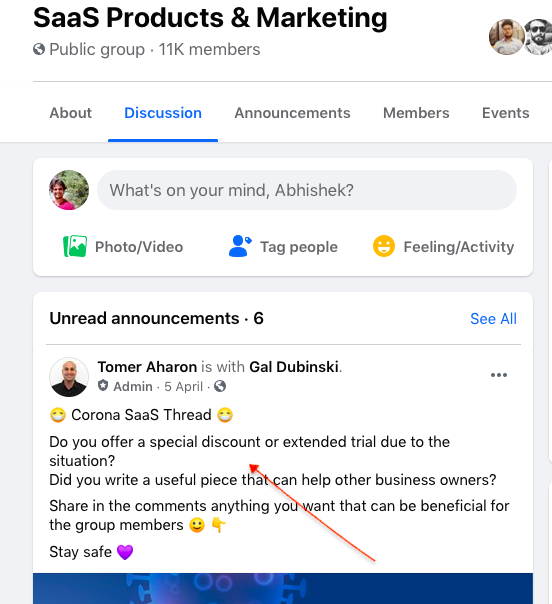Running a successful blog is no factory business, or you may treat it like one. But the thing is that you're looking for a loyal audience - a bunch of people who swear by your blog content. With these goals, you can't run your business blog like a workshop - you've got to be more personal. Make them devour your blog posts like cheesecake - surprise them.
The foundation for good SEO blog content starts with some robust blog posts. Let's learn how you can find fresh-new blog content ideas:
1. Collate Customer Challenges
The best of blog topics stem from customer challenges - here’s how to find them:
Once you have a bucket-list of customer problems, you can think of a variety of post ideas.
2. Look for Stories
Online audiences love stories - look around, and you’ll find lots of story ideas:

This way, you can make use of different types of stories to entertain your audience while also showcasing your worth.
3. Gather a List of Top Resources
Whether you're planning content for a B2B business or a B2C one, you'll find a list of best resources in your business niche. These resources could be thought-leadership blogs, videos or podcasts. Put them in a Trello board or a spreadsheet and refer to them whenever planning a new content piece. You can even subscribe to the best of industry newsletters.
Finding authority sources isn't tricky; you can use a tool like Feedly to find industry sources or simply export a list of top-ranking URLs from Google's search results.

Source: Feedly
Make a list of some of your key competitors and see how you can find topic ideas that are unique in your niche. In the words of Finn Cardiff, CEO of Beachgoer, a popular beach gear brand:
"My #1 tip to finding blog post ideas would be to check your competitors but improve on them. You don't want to be left in the dust as another copycat. Find a post your competitors have made that's not great, and make a better version. And don't fill it with fluff - either. Pack it with as many exciting details as your readers desire."
A list of resources can work as a ready reckoner for your blog content needs.
4. Find New Topics From Existing Ones
This is a cool technique to find engaging new topics:

This way, you can create different permutations and combinations of existing pieces of content for different audience sets.
5. Track Online Conversations
Numerous online conversations are happening daily. You can track relevant social media updates by following industries’ specific hashtags on channels like LinkedIn, Twitter and Instagram. For instance, if you're looking for conversations related to marketing automation, then you could follow hashtags such as #marketingautomation, #chatbotmarketing, and so on.


You can even create Google alerts of some of the prominent keywords in your niche, and this will help you track the latest conversations related to your industry.
Tracking online conversations gives you a pulse of the market, so you can understand what your audience wants to consume.
6. Follow Industry Trends
Industry news and updates are fantastic sources of new blog post ideas. Here are some places to explore the latest trends in your niche:

7. Pull Out Top Performing Content
A terrific way to figure out what's working best for your blog is to visit your Google Analytics account. Have a look at the top-performing blog posts, and make a list of the top 10 percent of your blog content.
Performance analysis helps in becoming more audience-centric to your blog ideation strategy.
8. Use a Piece of Research
Whether it is a study conducted by your in-house team or a leading industry publication, original research offers a variety of cues for creating blog post content.

Industry surveys offer tremendous value, and you can pivot several blog post ideas based on a piece of original research.
9. Curate a Round-up Article
Curated pieces and round-up articles are fun. They take less time and yet generate lots of valuable information.

10. Share an Opinion
You must have come across opinion pieces while reading a newspaper. An opinion is essentially a rant on a current news or industry trend.
An opinion piece is usually a short 800-word article about your point of view on a burning issue. So for instance, as a content marketer, let's say you don't like the idea of publishing long-form blog content, and with enough reasons; you can go out there and create an opinion piece about it.
Here is a similar example of an opinion piece:

When you take a stance that's different from how the majority perceives an issue, you'll attract many eyeballs. And yes, you might even go viral. An opinion piece is an underused blog type, but a useful one for your blogging calendar.
Over to You
Stay inspired and keep your blog readers glued - that's the success mantra for any business blog. Be a little observant and persistent, and you'll enjoy the blogging process as well as the outcomes.
Abhishek Talreja is a passionate writer and an experienced content marketing expert. He has contributed to top marketing blogs and works with international companies to help them earn online visibility and reputation. He is the founder of Prolific Content Marketing.
Website: http://prolificcontentmarketing.club
Twitter: https://twitter.com/Abhishekt5
LinkedIn: https://www.linkedin.com/in/abhishek-talreja-b6152710/
Facebook: https://www.facebook.com/abhishek.talreja1
Email: [email protected]


